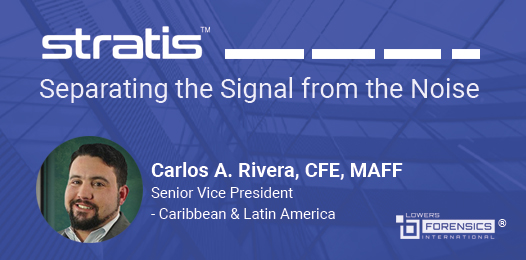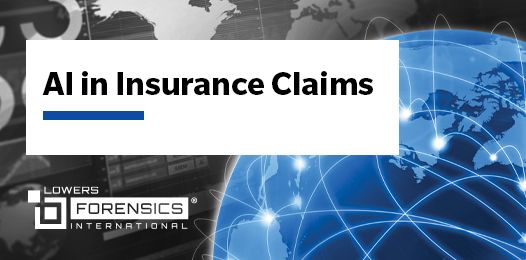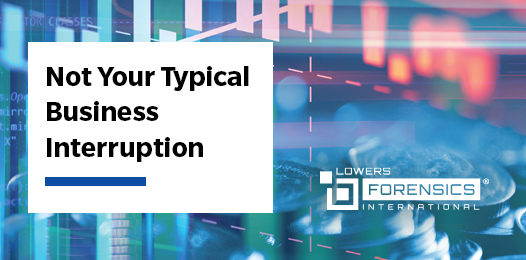Over the last decade, advancements in technology have provided an opportunity for organizations to combine digital tools in new and dynamic ways. Microsoft Excel has been the standard go-to for every forensic accountant for what seems like forever, and with good reason – it works. However, as several colleagues of mine discussed in LFI’s 2020 CAT Response Town Hall kick-off session, stacking certain technologies together are creating revolutionary advancements for the financial forensics industry.
When the appropriate tech stack is combined with a modernized workflow and a culture of collaboration, the difference in speed, efficiency, quality and cost becomes immediately apparent in side-by-side comparisons. At LFI, our in-house tech stack includes Zendesk, Infinilytics and Stratis, our proprietary claims management software. But while automated workflows, algorithms and machine-driven incremental learning are great, people are still paramount to the process. The successful resolution of ANY claim will always hinge on the application of human expertise in the final report.
We typically deploy Stratis to manage small (or as our friends in the UK like to say, “standard”) claims. The future is bright in terms of how Stratis will be able to help manage complex claims, but ironically, some of the most common questions I get about Stratis are related to CAT claims, which tend to encompass both. Below, I’ve highlighted three questions I get the most often, and done my best to answer them in the space allowed.
If you think Stratis can help your team manage claims during a CAT, or you’d like more information, please don’t hesitate to reach out to me.
1. CAT situations move fast. How can Stratis help?
Stratis is an exceptional tool that allows the forensic accountant to separate the signal from the noise. In a CAT situation, you usually either receive a voluminous amount of information or very little information. Stratis’ unique organizational structure allows the forensic accountant to retain valuable data to efficiently and effectively proceed with the analysis. Additionally, at the beginning of a catastrophe situation, there is priority given in establishing reserve estimates as quickly, but as efficiently, as possible. Stratis’ unique automated component is tailor-made for such situations. It allows the user to process the information on hand and run it through one of Stratis’ proprietary models to provide the end user with an accurate reserve calculation.
2. Do you have an example of how Stratis uniquely helped manage a CAT claim?
A CAT situation typically affects a wide area within a region. This region is often part of an existing infrastructure within an industry (for example, a hurricane may strike a tourist region and impact the hospitality industry therein). As a result, as forensic accountants, we may be assigned several hotel losses in the area. Stratis allows us to process the data we receive from each unique hotel and start to compile a database of valuable figures, information and statistics we can then utilize as a baseline across all losses. Due to Stratis’ uniformity and efficient data collection, forensic accountants are able to establish and create models of industry behavior unique to the catastrophic situation. It allows the forensic accountant to accurately evaluate the current big picture and apply trend-behavior specific to any loss.
3. Can Stratis help calculate a loss that has several locations within a CAT situation?
Yes! Most forensic accountants have dealt with a situation where a claimant/insured has several locations impacted by a CAT event. Stratis allows the forensic accountant to customize a model specific for that client and, in a cost-effective and highly precise method, allows us to calculate losses across many locations. As every forensic accountant can attest to, consistency across all business lines is extremely important. Stratis gives the carriers a wholistic view with uniformity to handle the calculation.
Because of this uniformity and efficiency, one of the biggest feedbacks I get is about continual communication Stratis enables throughout the process. It’s necessary to perform the calculation and helps mitigate one of the biggest challenges with any claim – communication. My clients often point to our competitors and complain about a lack of communication; Stratis eliminates this because communication is an inherent feature of the software – you have to communicate through the whole process. Stratis won’t let you move forward without it! But that brings me back to the point I made at the beginning: yes, Stratis has automated significant parts of the claims process, but behind the scenes, there is a forensic accountant involved in every step of the procedure. This is extremely important to us at LFI because it allows us to quickly respond and communicate as the calculation develops.
About the Author
Carlos Rivera, Senior Vice President – Caribbean & Latin America, brings over 15 years of experience to the LFI team. Fluent in English and Spanish, Carlos has worked claims in the US, Argentina, Chile, Brazil, Mexico, Guatemala, Costa Rica, Panama, the Dominican Republic, Jamaica, Puerto Rico, Venezuela, Colombia, Honduras and Ecuador. His specialties include the review, analysis and measurement of US and international business interruption and property losses, as well as disputes for clients in the insurance and legal markets. Carlos is also a Certified Fraud Examiner and holds a Master Certification in Advanced Nonverbal Communication from JN Forensics Academy, as well as Master Certifications in Subtle Expression Recognition and Micro-Expression Recognition. He has applied these skills for clients across a wide variety of industries, including: Energy, Manufacturing, Mining, Hospitality, Big Pharma, Retail, Construction and more.





